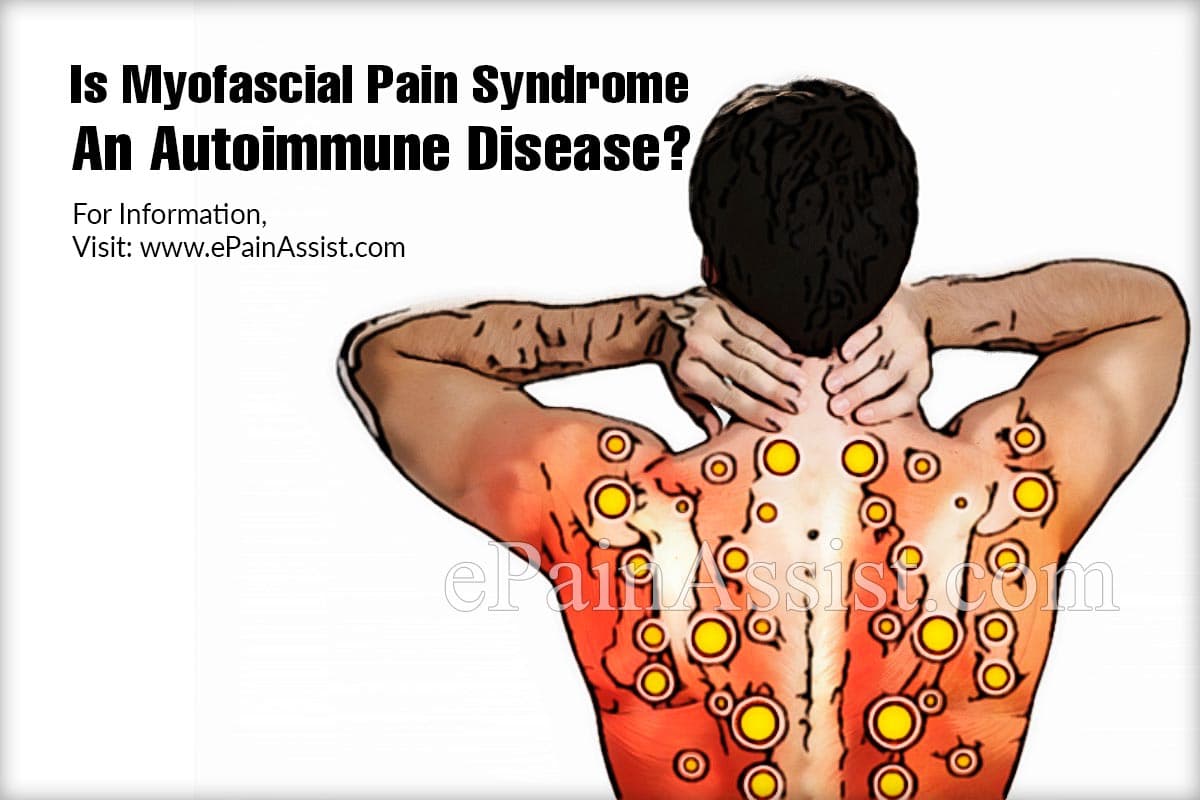Myofascial pain syndrome is a disease in which you suffer with pain at certain locations over body. It is the disease of muscle as well as of the fascia that covers the muscle.1 There has been a theory called myofascial trigger point theory that explains the cause of this disease, but the exact cause is not yet known. Myofascial trigger points are the areas on body that are hypersensitive. On applying pressure on these points, there is elicitation of intense pain. There is no specific area for this; it can appear at any site on the body. These trigger points are present in the muscle bands. They can be felt under the skin sometimes as nodular and firm structures.

Is Myofascial Pain Syndrome An Autoimmune Disease?
Autoimmune diseases are the ones in which there is activation of immune response against self-body tissues. Normally, when there is invasion of the body by some pathogenic bacteria or a virus, there is activation of immune system. But in autoimmune response, the immune system is activated on its own against the tissues of the body itself.2 For example, in myasthenia gravis, which is an autoimmune disease, there is activation of immune system against the acetylcholine receptors and they are destroyed. This is an autoimmune response. On the other hand, in myofascial pain syndrome, there is no such immune response. There is no damage to the muscles or to any other tissues due to immune system.
The cause of myofascial pain syndrome is that it occurs due to appearance of trigger points over body that contains taut muscle fibers. The muscle fibers become taut either due to over use of the muscle or due to no use of the muscle. No use means like due to any fracture, when the fractured body part needs to be immobilized for a certain amount of time, the muscles also stay inactive and this results in production of taut muscles. When these taut muscle fibers are triggered by applying pressure, it causes intense pain. This is called as myofascial pain syndrome. There are two types of myofascial pains; one in active and other is latent. Active is when the trigger point is pressed, the painful response is generated right away without delay. On the other hand, in latent type, when the trigger point is pressed, it takes some time to generate the painful response.
So the answer is clear, that myofascial pain syndrome is not an autoimmune disease; it is a chronic neurological disease. But it has been reported that certain autoimmune diseases like lupus can give rise to myofascial pain syndrome.
Pathophysiology Of Myofascial Pain Syndrome
Myofascial pain syndrome is more common in older age group above 50 years of age. There is no gender predisposition for this disease as it is equally seen in both the genders. It is not prevalent at a particular area or location; it can be seen all over the world. The exact cause of myofascial pain syndrome is yet to be known. But there is a theory about myofascial trigger points (MTrP). Myofascial trigger points are areas on body that are hypersensitive. These trigger points are formed inside the motor endplates of the muscles. Any local injury due to repetitive trauma can make these endplates as the trigger points. Due to repetitive injury, there is release of acetylcholine that leads to hyperactive muscle endplate. This gives rise to a palpable and hyperresponsive locus within the muscle. The pain is due to release of chemicals like bradykinin, which is an inflammatory mediator, and also release of other vasoactive components. These mediators cause local muscular pain.
If the source for external injury is absent then the possible cause for this disease can be due to neurogenic inflammation that can result from central nervous system sensitization. The pain in myofascial pain syndrome is present for more than three months continuously.3
Conclusion
Autoimmune diseases are the ones in which the immune system of a person’s body attacks the cells or tissues of the own body. This happens due to misunderstanding by the immune system that the self-tissues are foreign. So no, myofascial pain syndrome by itself is not an autoimmune disorder, but there are certain autoimmune diseases like lupus that can give rise to myofascial pain syndrome as a complication.
Also Read:
- Alternative Treatment For Myofascial Pain Syndrome
- Recovery Period For Myofascial Pain Syndrome
- Can Myofascial Pain Syndrome Turn Into Fibromyalgia?
- What If Myofascial Pain Syndrome Goes Untreated?
- How To Cope With Myofascial Pain Syndrome?
- Is Myofascial Pain Syndrome Inflammatory?
- How To Prevent Myofascial Pain Syndrome?
